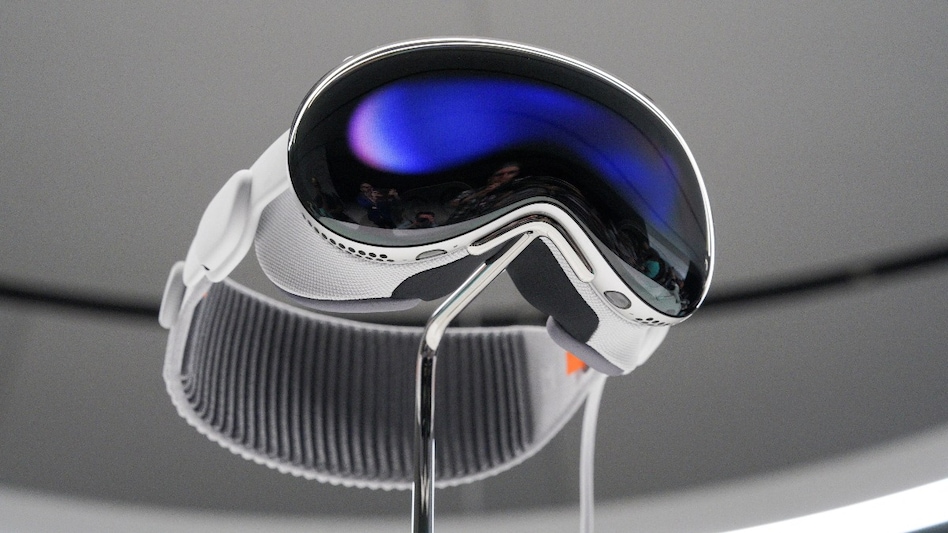 Apple Vision Pro
Apple Vision Pro
 Apple Vision Pro
Apple Vision ProApple is entering the rapidly evolving world of brain-computer interfaces (BCIs), working on a new standard that could eventually allow users to control devices like iPhones, iPads, and the Vision Pro headset using only their thoughts. According to a detailed report by The Wall Street Journal, the technology, which is still in its early stages, is being developed in collaboration with US-based startup Synchron and is part of Apple’s broader commitment to accessibility.
How It Works
At the centre of Apple’s BCI initiative is the Stentrode, a stent-like device created by Synchron. Unlike Elon Musk’s Neuralink, which embeds over 1,000 electrodes directly into brain tissue, the Stentrode is less invasive; it is inserted into a vein near the motor cortex. Once in place, its 16 electrodes pick up brain signals and translate them into digital commands, The Wall Street Journal reported.
These neural inputs integrate directly with Apple’s existing Switch Control feature, part of its accessibility toolkit, which traditionally supports alternative input methods such as joysticks or head movement. Now, the system can accept direct signals from the brain, enabling basic navigation across Apple’s operating systems.
One early user, Mark Jackson, who lives with ALS near Pittsburgh, has successfully used the system to control his iPhone and iPad, and even explore the Swiss Alps through the Vision Pro. Though physically immobile, Jackson was able to experience a virtual mountaintop, saying he could feel the sensation of standing at a height, thanks to the synchronised neural feedback and Apple’s mixed-reality headset, according to the Journal.
Apple to release BCI software standard
Until now, BCI developers have had to simulate mouse or keyboard inputs to interact with software. Apple’s forthcoming software standard, expected to launch later this year, will offer a native interface for developers building apps that respond to neural signals. This could result in faster, more seamless control experiences, paving the way for a new generation of assistive technology, the Journal said.
Synchron, which has implanted its device in 10 patients since 2019, reports promising safety outcomes. The company is also exploring integration with AI tools like ChatGPT and has created a community portal for users interested in upcoming trials.
Apple has previously established device communication standards to improve accessibility; for instance, its 2014 framework for Bluetooth-enabled hearing aids is now widely used. A similar model for brain-controlled interfaces could spur broader adoption and industry alignment.
Neuralink’s deeper approach
Meanwhile, Neuralink, founded by Elon Musk, is taking a more aggressive approach to BCIs. Its N1 implant, already tested in three human patients, features over 1,000 electrodes implanted directly into brain tissue. These allow for faster and more precise control, with Musk claiming Neuralink’s first human trial subject could move a digital cursor faster than most can with a mouse.
While Neuralink is focused not only on accessibility but also cognitive enhancement, Synchron and Apple are taking a measured route focused on real-world applications for people with motor disabilities.
A long road ahead
According to The Wall Street Journal report, Morgan Stanley estimates that around 150,000 Americans with severe upper-limb impairments could be among the first to benefit from commercial BCI systems. The investment bank predicts such technologies could achieve FDA approval by 2030, though Synchron CEO Tom Oxley is optimistic about a shorter timeline.
Despite the hype, widespread adoption may still be years away. Both Synchron’s and Neuralink’s systems remain in early stages, with current use limited and control speeds well below that of traditional inputs. Still, Apple’s involvement is significant, it not only validates the BCI space but could accelerate its integration into consumer tech, pushing the boundary of human-device interaction toward a future where digital lives are controlled by thought alone.
For Unparalleled coverage of India's Businesses and Economy – Subscribe to Business Today Magazine